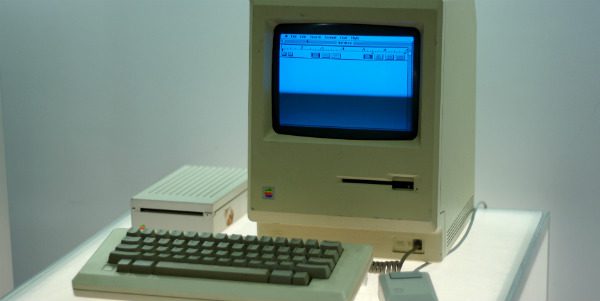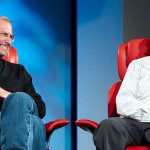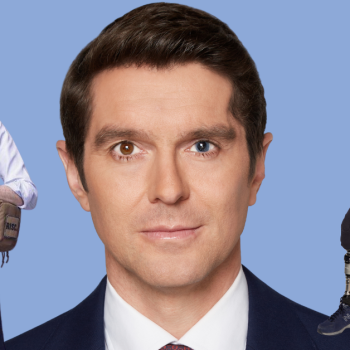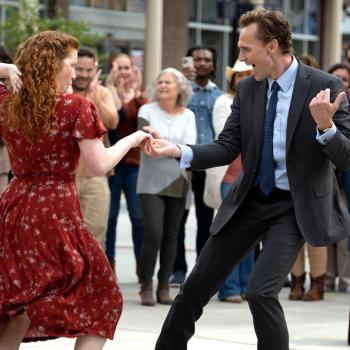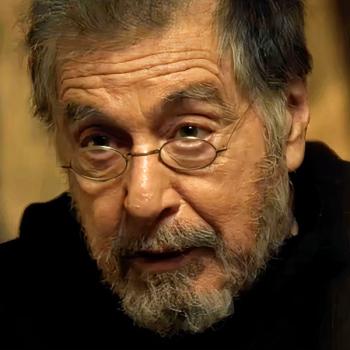Last week, Apple co-founder Steve Wozniak called in from Sydney, Australia — where he’s now an adjunct college professor — to talk about the new “National Geographic Channel series “American Genius,” premiering Monday, June 1, which contrasts pairs of great minds and innovators. It starts with “Jobs vs. Gates,” with Apple co-founder (with Wozniak) Steve Jobs and Microsoft co-founder Bill Gates.
Click here to see part one of the conversation with Wozniak, which addresses the differences and similarities in style belief systems between him and Jobs, and the dangers of the Internet of Things.
Now, Wozniak addresses Apple’s signature product, the original Macintosh computer, which, while considered very cool and innovative, was quickly eclipsed by less expensive,  Windows-based PCs:
Windows-based PCs:
The Apple Macintosh basically was not a computer. It did not have an operating system. It could not be attacked, but every decision to make it very, very tiny made it very weak and held us up. It was during the time of the Macintosh that the world market grew ten times, and Apple did not go up with it.
Steve Jobs didn’t know technology, and so he would see something and visualize. I can write a program. I could have programmers write a program that looks like a cursor moving on a screen but not understand the deeper workings of computers, of operating systems, of what makes it all work. Had he done that, he would have seen the cost to do a real computer was the cost of the Lisa, which was $20,000 of today’s dollars.
Steve himself, through his lapse in technology, thought we can make a little program that sort of looks like a computer, and it was the Macintosh. The Macintosh was our biggest failure to this day. It still is our failure, because we missed the growth of the computer market.
We all came to believe in the Macintosh. We all followed it. I loved it, wanting to do it, but it took years to build. Steve Jobs thought it would happen instantly, like the Apple II. When we were down at Xerox PARC, he looked at them and said, “You’re making this machine for so much money. We can do this little wand magic or something, and we can make it for $1,000 instead of $50,000.”
Well, you need that sort of inspiration sometimes to move your company towards a new product line, but it doesn’t mean it’s accurate. But Xerox was trying to do the best thing that computers could do in the world, and they were correct.
Steve was trying to push the envelope of when it could be done at a reasonable cost for what it does. This was going to involve a lot of work and a lot of market loss. So, Steve was right, but he was also on a course that didn’t necessarily help the world or achieve what his real goal was.
(An unknown woman recently handed over a first-generation Apple I computer, estimated to be worth about $200,000, to recyclers in San Jose, California. Luckily for computing history, it survived.)
Wozniak on two current shows about the computer industry, HBO’s modern-day “Silicon Valley” and AMC’s 1980s period piece “Halt and Catch Fire”:
“Silicon Valley,” I watched the entire first season. The trouble is, I have to download it. We don’t watch television at our house. It fit into this thing where, when we started Apple, there were companies that would spin off. Along came groups like Bill Gates and Microsoft, and Steve Jobs and myself and Apple, and a lot of young, young people, Mark Zuckerbeg, working in a dorm, creating great companies.
So, it became very enamored by people, wanting to be an entrepreneur, wanting to know the formula. “How can I someday be part of a start-up, one of the most exciting things in life for people of that university-type age?” So, those TV shows definitely would find an audience, either have an interest, a spark, a point that could grab an audience.
“Halt and Catch Fire,” too. Wow, I love the portrayal, but it’s more like a lot of the drama.
Finally, regarding the now-legendary notion of Internet titans Jobs and Gates facing off:
A lot of the world gets built up by others when you’re in this, I don’t know, kind of superstar god-like category, like Bill Gates and Steve Jobs. So, the myth gets built up in our heads, and we want to justify our own myths and feelings. This is one of the great controversies and rivalries, because there are people on both sides. Mostly it’s pro-Apple or anti-Apple, but it comes out that way.
If you watch Steve Jobs together [in 2007 at the D5 conference] on AllThingsD.com, when they were on together, the way Bill Gates looked at Steve Jobs was as though Steve jobs, that his mind was different, and he was a god, and how can you think that way? Even we technologists can build things, but to have thinking like Steve Jobs is amazing.
And remember, the world had Steve Jobs because his unwed mother chose life and gave him up for adoption.
Here’s a look at what happened when Jobs and Wozniak visited the often-unheralded geniuses at Xerox PARC (Palo Alto Research Center) in the winter of 1979:
Images: Wikimedia Commons


